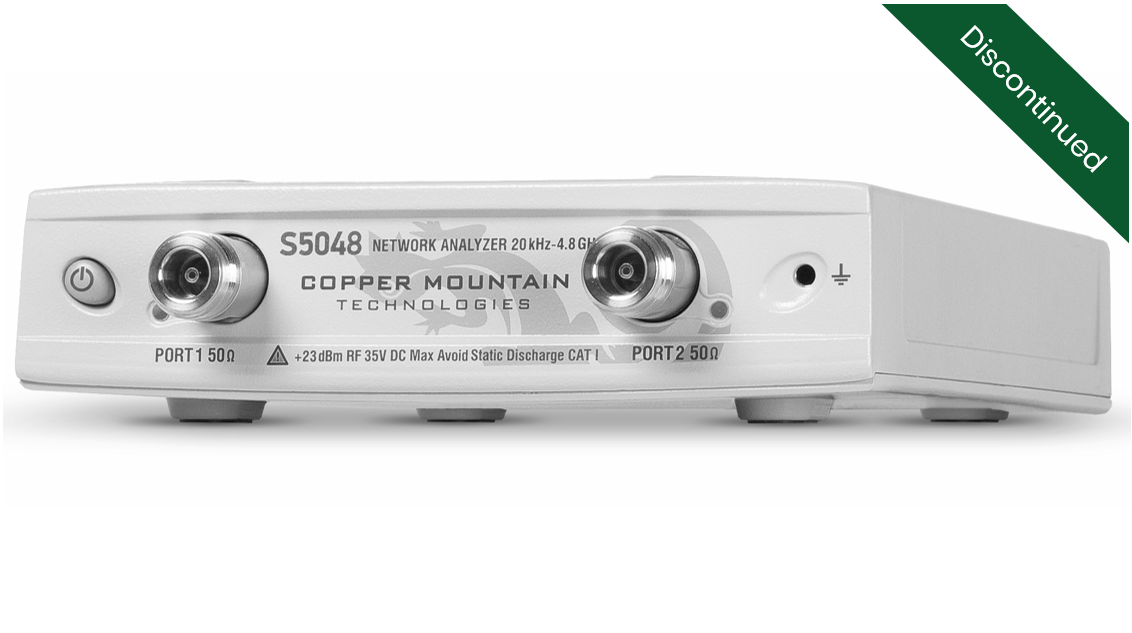Connecting to S5048 2-Port 4.8 GHz Analyzer by Coppermountain in Python
Instrument Card
The S5048 Vector Network Analyzer delivers lab grade performance in a compact package, with all the features engineers have come to expect included standard in our software.

Device Specification: here
Manufacturer card: COPPERMOUNTAIN

Copper Mountain Technologies develops innovative RF test and measurement solutions for engineers worldwide that enable engineers to extend their reach.
- Headquarters: US
- Yearly Revenue (millions, USD): 301
- Vendor Website: here
Connect to the S5048 2-Port 4.8 GHz Analyzer in Python
Read our guide for turning Python scripts into Flojoy nodes.
PROTOCOLS > SCPI
To connect to a S5048 2-Port 4.8 GHz Analyzer Network Analyzer using Qcodes Community, you can use the following Python script:
from qcodes.instrument.visa import VisaInstrumentfrom qcodes.instrument.parameter import ArrayParameterimport qcodes.utils.validators as vals
class CMTS5048Trace(ArrayParameter): # ... (code omitted for brevity)
class CMTS5048(VisaInstrument): # ... (code omitted for brevity)
# Create an instance of the S5048 Network Analyzers5048 = CMTS5048('s5048', 'TCPIP0::192.168.1.1::inst0::INSTR')
# Connect to the instruments5048.connect()
# Print the start frequencyprint(s5048.start_freq())
# Set the stop frequency to 1 GHzs5048.stop_freq(1e9)
# Prepare the traces5048.trace.prepare_trace()
# Get the trace datatrace_data = s5048.trace()
# Print the trace dataprint(trace_data)
# Disconnect from the instruments5048.disconnect()This script creates a custom CMTS5048Trace class that extends ArrayParameter to hold the trace data from the S5048 network analyzer. It also creates a CMTS5048 class that extends VisaInstrument and defines various parameters and methods to control the network analyzer.
To use the script, you need to replace 'TCPIP0::192.168.1.1::inst0::INSTR' with the actual address of your S5048 network analyzer. Then, you can connect to the instrument using s5048.connect(), set parameters, prepare the trace, and get the trace data using s5048.trace(). Finally, you can disconnect from the instrument using s5048.disconnect().